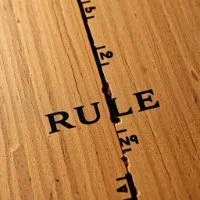Story 43. Prologue to the Sustainable Cases of Colmes and Hobson, ABD.
Many friends and relatives or others who claim to know me have asked whether or not a particular novel or short story I wrote was “autobiographical.” To this unavoidably prurient question I always answer, “all writing is autobiographical, and that includes nonfiction as well as fiction.” To me the answer is obvious. I am a human. All of what I do is part of me, and thus logically is autobiographical.
Take any piece of writing no matter what topic or author. The syntax is often a dead giveaway, the choice of favorite or habitual words another. In non-fiction, the author (note author and autobiographical begin with the same Greek syllable). You may doubt the truth of this claim, especially in respect to scientific writing. But just look closely at the issue or scientific topic that has been chosen. Will I experiment with frogs, chickens, or humans? Shall I study the mechanics of the brain? The eye? The anus? Shall I study atomic energy? Climate change? All such choices are value choices and it is values that form the basis of any human personality. So the case that nonfiction is unavoidably partly autobiographical is easy to make. I say “partly’ with some caution, though many dedicated (note that value-added word) individuals devote their lives to their entire scientific field of study.
The question of embedded autobiographical traits in fiction is much more difficult to discern. The novelist or story writer is very much a play actor, magician, teaser, and most of all liar. The saying “oh what a tangled web we weave” (Sir Walter Scott — a creature of the courtroom where plots are invented and uncovered) sums it up nicely. Fiction writers of course write about themselves and inextricably about those they have met, some momentarily, others every day of their lives. The devilish fun of the fiction writer is to hide the habits, traits, peccadilloes, physical and other attributes, some of them sliced off a real life person so that they will not even be recognized in the characters that the fiction writer invents. They bury all these small and large attributes in a thicket of plot, mystery, action, even physical surroundings such as furniture.
This series of short stories, is loosely connected to a vague plot that remains in the background. I have adopted (some might say distorted) the style and structure of story writing from the works of Arthur Conan Doyle, though his books of collected short stories were published well after each of his stories had appeared in various weekly or monthly magazines. Faithful to his two central characters, Sherlock Holmes and Doctor Watson, the two main characters in these stories are Professor Thomas Colmes, the Sherlock character, and William Hobson A.B.D. the Dr. Watson character. What A.B.D signifies will become clear as the stories unfold, though readers who have studied at the graduate level of a university will immediately recognize it. The setting for all the stories is not Victorian London, but a provincial university in a provincial town in upstate New York, late twentieth century to early 21st century. The university is called Schumaker University a state university named after the revered democratic senator of a similar name who reigned (that word chosen carefully) in New York for some decades and who laid its foundation stone in 1961.
The stories are written in the form of cases just like Conan Doyle, and they are recounted by Colmes’s trusted assistant, Hobson, A.B.D. All cases are based on absolute fact, unless the reader discerns otherwise. To put it another way, the truth of the stories lies hidden behind the facts. I leave you to sit and chew over the slippery problem of autobiographical writings, and their veracity, in preparation for the first story in two weeks time, titled simply “Colmes.” Actually it’s not really a story. Rather an introduction to the character of Colmes, his method, and some hint as to my personal relationship to him.
I remain, your devoted recorder of the truth, Colin Heston.

